Engaging Communities through Intentional Experiences
In January, I spoke about a topic important to Marco during Sendoso’s Super Sender conference in Las Vegas. Sendoso is the leading sending platform. They allow salespeople and marketers to connect with their prospects through gifting, and use technology to streamline the process and measure ROI.
During the Super Sender event, Sendoso brought together a community of their top customers. It was a great forum to share why engaging communities through intentional experiences is more important than ever.
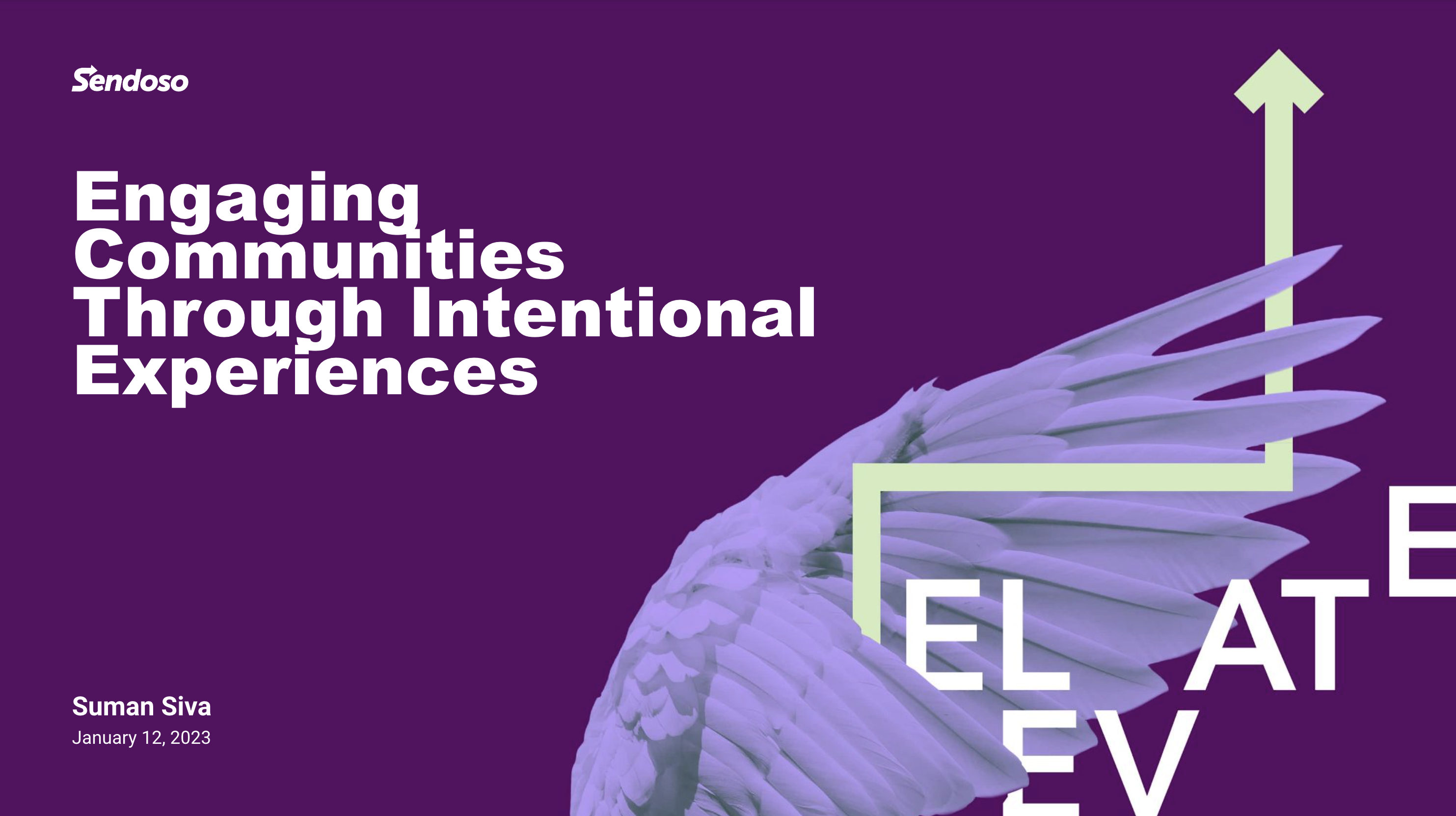
The speech ended up being a story about my life, the journey of building Marco, and as Simon Sinek has said before, really clarifying the “why” of what we’re working on.
If you want to skip the blog and just check out the video, here it is!
SO...
Engaging communities through Intentional Experiences.
This is our mission at Marco. I believe we should all be investing more in our personal and professional communities, and that experiences are the best way to do that. We will live a more fulfilling life if we do so.
My Community
What better way to start a blog post than with some baby pictures…

Here’s a photo of my brother, sister, mom, and dad, taken in Charlotte, North Carolina around 1994.
My parents moved to the US in a classic immigrant story. My dad was working in Sri Lanka when his house and business got burned down in a civil war. He ended up moving back to India, and together with my mom, moved to the US to start a new life.
I’ve asked him before why he chose to move to the Deep South as an Indian immigrant family - the answer is unclear (Google didn’t exist back then), but that’s where they ended up and began to build their life.
Restarting their life in America was challenging for them. Not only to make ends meet as an immigrant family but also to find their people.
If you know anything about Indian culture, you know that it’s centered around community. Close friends and family are core to many Indians' identities. My parents had left all of that behind when they moved to the States.
Initially, it was challenging for them to find their people.
Luckily - they did! They made friends that turned into family, folks that I call aunties and uncles, and look forward to seeing them when I head back to Charlotte for Thanksgiving and Christmas.
The reason I bring up this story is that early in childhood I had a clear reminder of just how important community is to be happy.
…okay more baby pictures
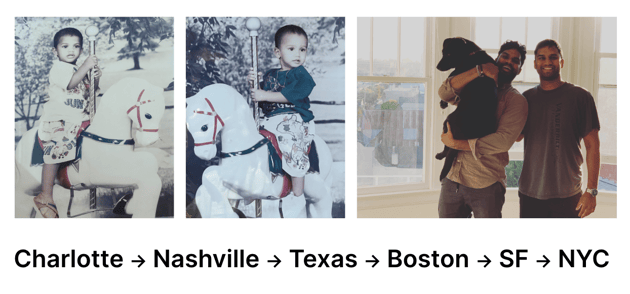
It wasn’t easy for me either growing up to “find my people.”
I grew up in Charlotte, NC as a proud American. But I also had very Indian parents. Growing up, similar to a lot of first-generation immigrant kids, I spent a lot of time figuring out how to own this hybrid identity and find my people. Truthfully, I still am.
While having a tiger mom helped me do well in the classroom, it didn’t help me get a date to junior prom. Luckily I did get a date to senior prom. Also lucky that I had a twin brother (pictured above in our matching jungle outfits) to share this journey with.
We both went on to go to college at Vanderbilt in Nashville. After college, I spent time in several cities, including Jackson Hole, Houston, Dallas, and Boston, before moving to San Francisco to join SoftBank’s Vision Fund when it was around 20 people and just getting off the ground (could save a full blog post for that story).
After a couple of years at SoftBank I had a moment of self-reflection. On paper, I had achieved a lot of what I set out to when I began my career. But I still didn’t feel connected to what I was doing. I was working long hours, but in a job with a challenging culture, doing work that I didn’t feel connected to.
That’s when I took the plunge into entrepreneurship to begin building Marco. We started working on Marco before the pandemic. As you can imagine, it’s been a wild few years. We were initially focused on connecting consumers through events. We built a product similar to Partiful and then pivoted to focus on connecting companies.
We began connecting companies virtually because that was the only way we could connect at the time. We then expanded to connecting people in person and through company retreats. Our goal is to allow companies and communities to bring their people together however they want. We’re also building technology and products that make this easier.

I have spent a lot of time thinking about why the connection is more important now than ever.
Here’s a photo of San Francisco before COVID. It’s a regular day near Market Street. You can see lots of traffic, a biker weaving in between cars, and a man on the phone during his morning commute. A lot of us don’t even remember what a morning commute is, or have one that looks a lot different from how it did in the past.
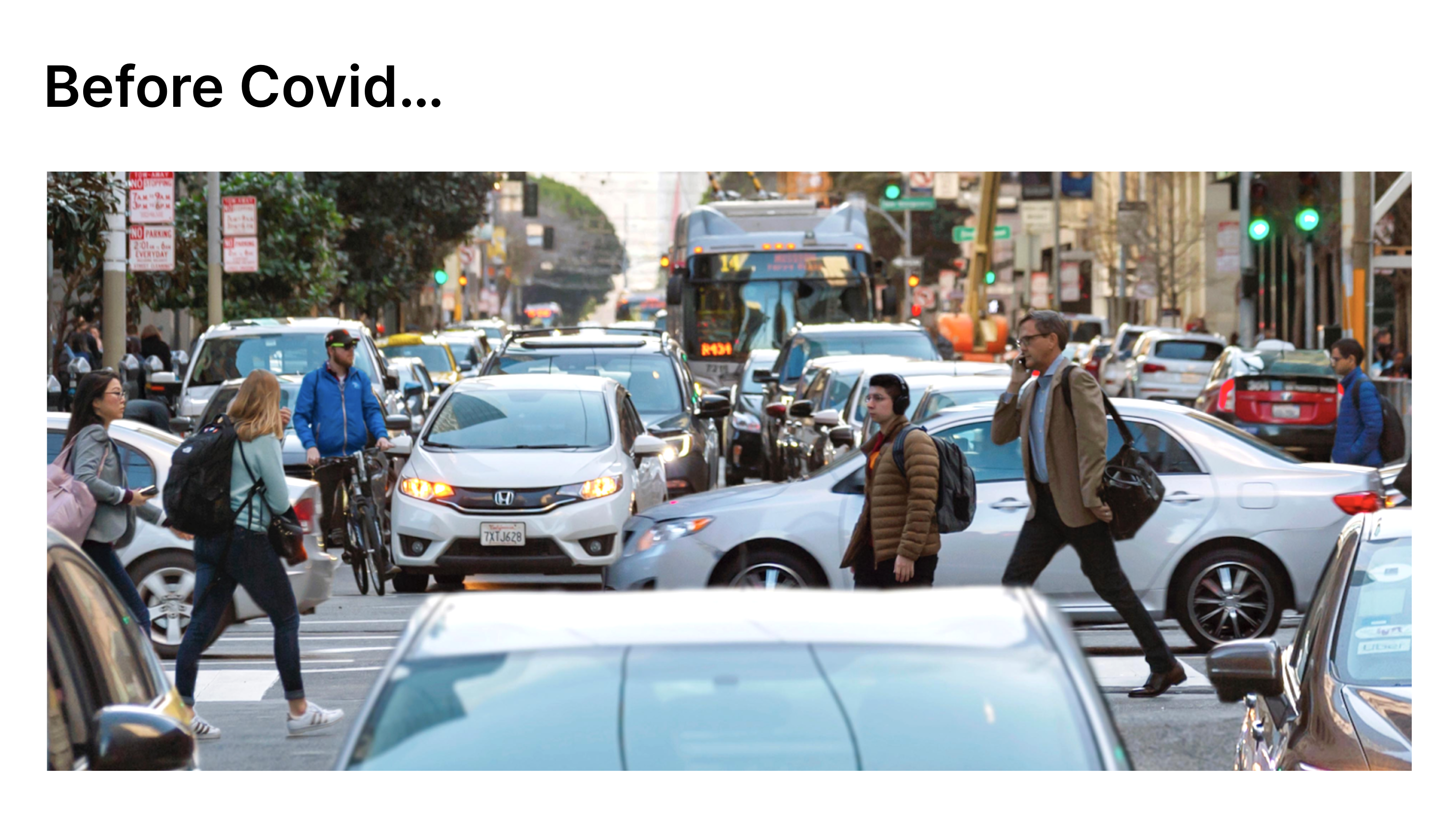
Now here is a photo of San Francisco taken in December of 2022 and featured in a New York Times article titled “What Comes Next for San Francisco's Emptied Downtown.” As you can see, it’s a very different picture. There is no morning commute. There are few cars on site.
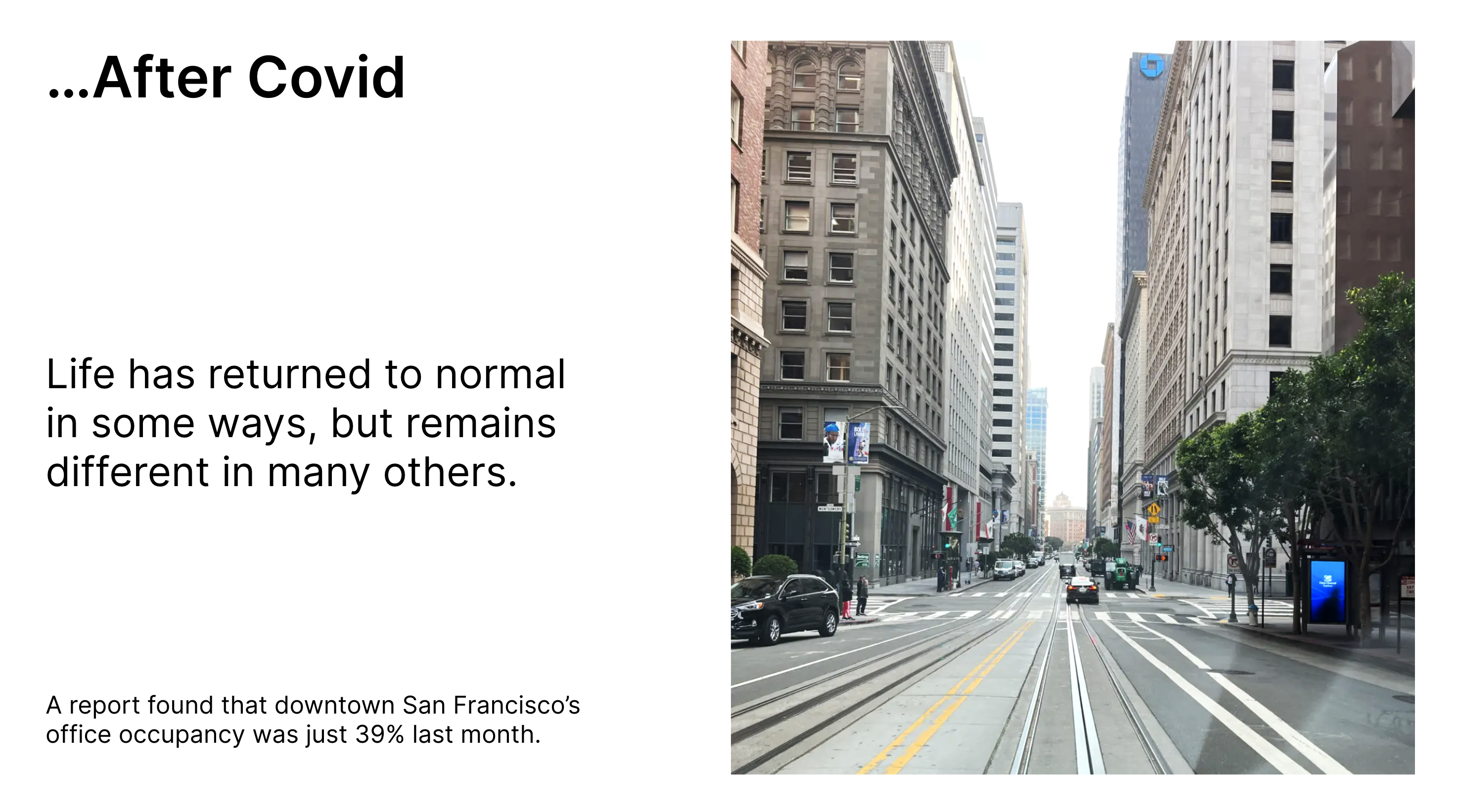
Of course, San Francisco is one of the cities where remote work has changed the most given the concentration of technology companies that have embraced remote and hybrid work. Office occupancy hovers around ~40% for San Francisco even after we’ve emerged from the pandemic.
I don’t know if any readers are Friends Fans, but as you can see in the picture here, a lot of our relationships used to be IRL, or as I like to say, normal. We used to grab a drink with coworkers after a day in the office, grab a midday coffee with a friend during the week, and get together a lot more IRL.

Those moments still happen of course, but our lives are a LOT more digital and online.
Adult screen time has increased by ~60-80% during COVID. That’s a mind-blowing statistic to think about (and is making me think about how to get my screen time down).
As Satya Nadella said in April 2020, we’ve seen two years' worth of digital transformation in two months during COVID. That digital transformation persisted.
During COVID we learned about the Bored Ape Yacht Club. Facebook changed its name to Meta and we learned what the Metaverse is (still not sure what it is, tbh). I’m not sure if any of you are hip enough to be on BeReal (I’m certainly not), but social media apps ranging from Clubhouse to Twitter saw usage explode.
We can all with certainty say we’re on endless Zoom calls pretending like it’s fine when maybe it’s not.
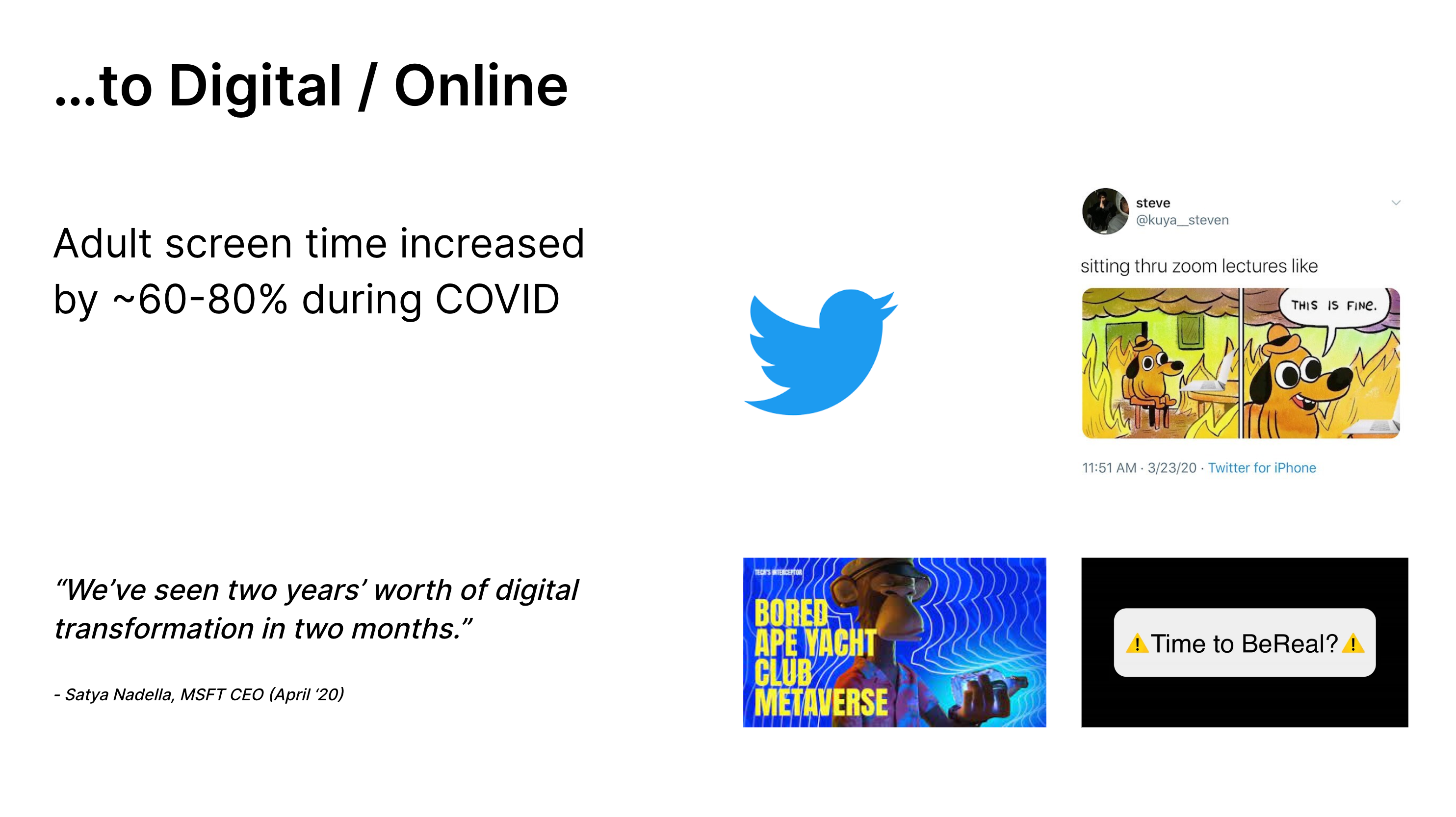
During the speech, I asked people to raise their hands if they feel lonelier or more isolated now than they did before COVID. Nearly everyone in the audience raised their hands. This makes sense, we’ve gone through a pandemic and are now going through a near recession, all in the past few years.
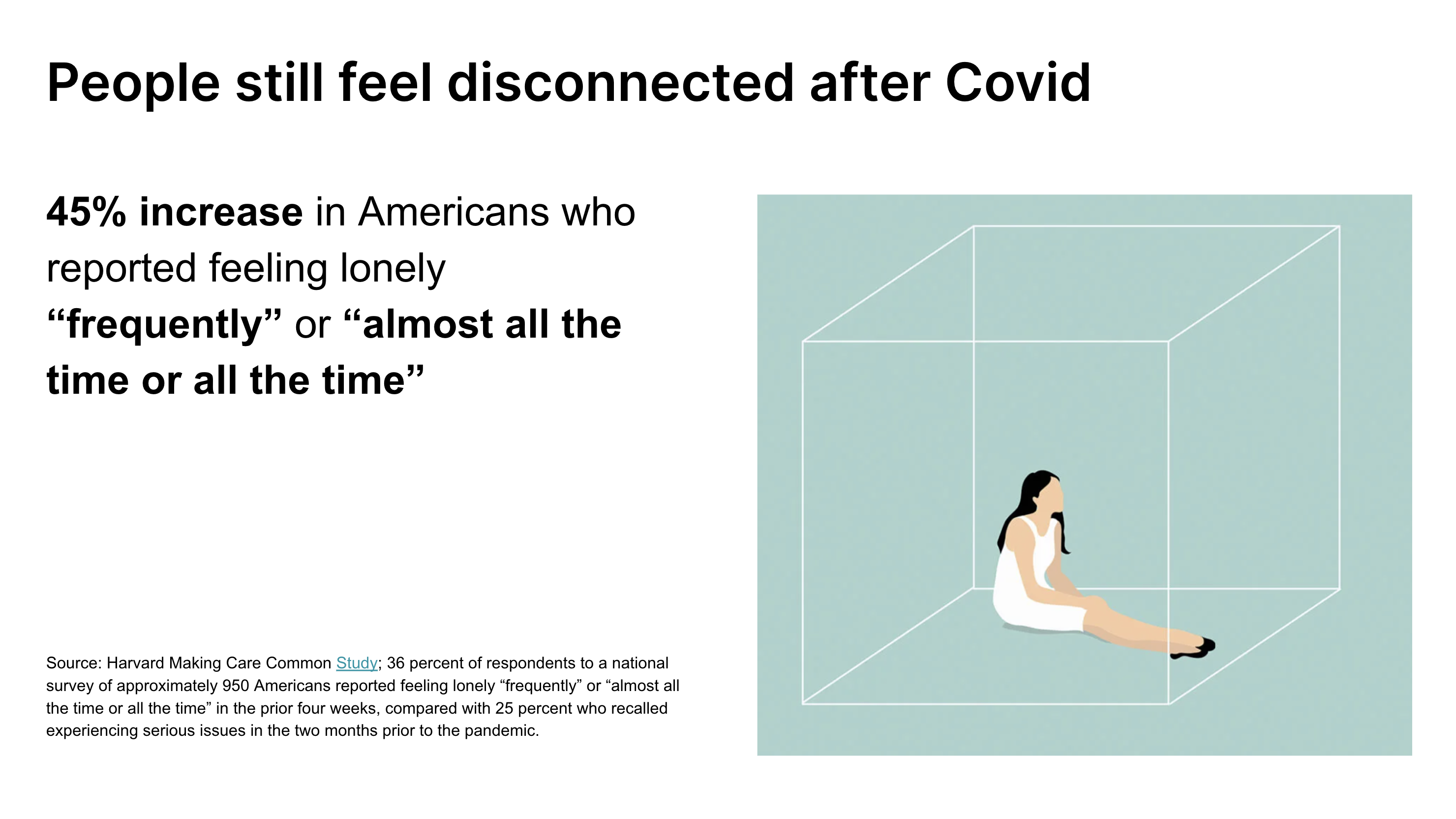
The audience was, for better or worse, in good company. In a Harvard, Survey called “Making Care Common” last year, there was a 45% increase in the number of Americans reporting that they felt lonely “frequently” or “almost all the time.” More than 1/3rds of respondents feel lonely this frequently - and this number is even higher for young Americans.
Among young adults ages 18-25, 60%+ feel lonely either frequently or all the time.
We see here that we’re in a crisis of connection. The way we work and live has fundamentally changed, and it’s important to acknowledge its impact personally.
Connection in your personal life is important. But connection at work is more important than ever.
We spend 1/3rd of our lives (for many of us more) at work. That’s 90,000 hours+ of our lives at work.
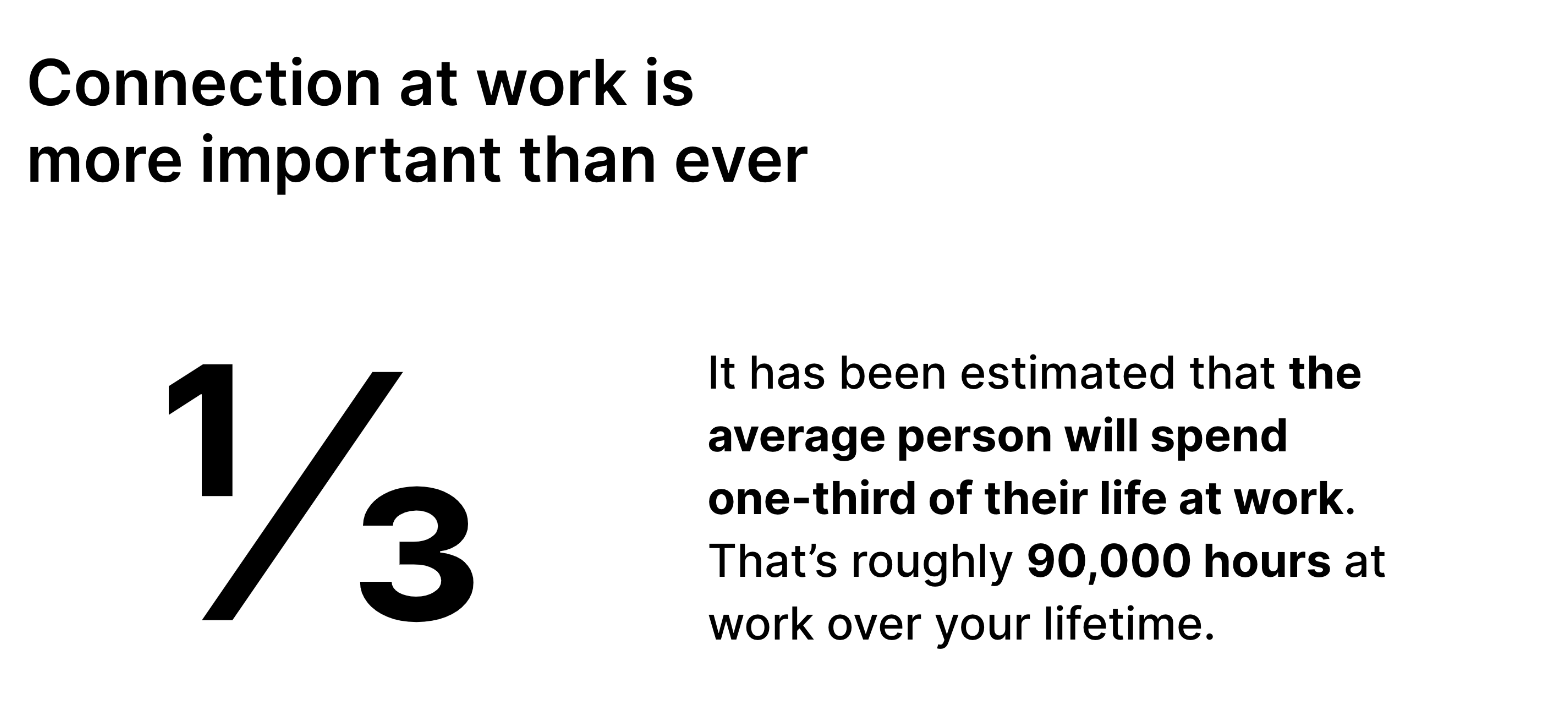
Without knowing anything else, we can all agree that if we are spending that much of our time doing something, then we deserve to feel connected to it.
What we don’t realize is that the companies where we work are communities. Chris Schembra, a Marco host, discusses in his book “Gratitude and Pasta” that word “Companies” comes from two Latin words: “Com,” meaning together, and “Panis” meaning bread.
The original companies were people coming together to break bread. This translated into its current construct of “a number of persons united to perform or carry out anything jointly,” or a business.
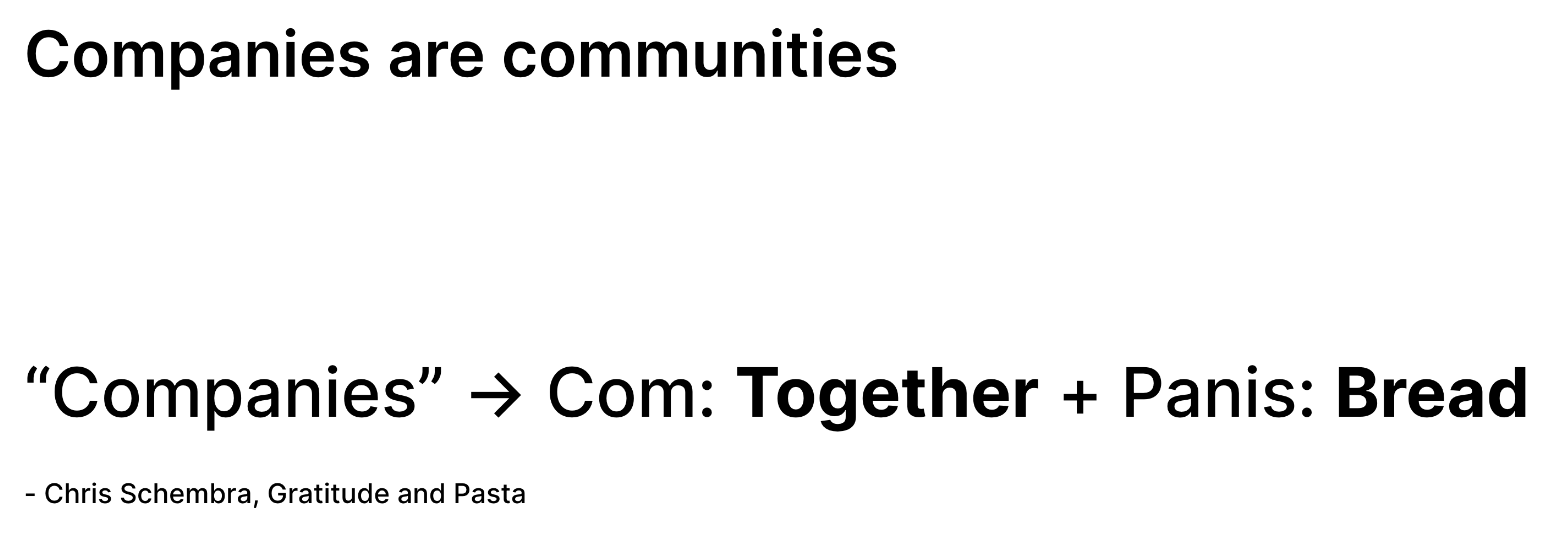
Although it remains true that companies are communities, the way we work and live has fundamentally changed over the past few years.
As you can see in these charts, according to the most recent Gallup data, over 80% of companies are either remote or hybrid. That number is even higher for technology companies. Kleiner Perkins surveyed their portfolio companies and found that over 90% of them were either hybrid or remote. This distribution is expected to persist.
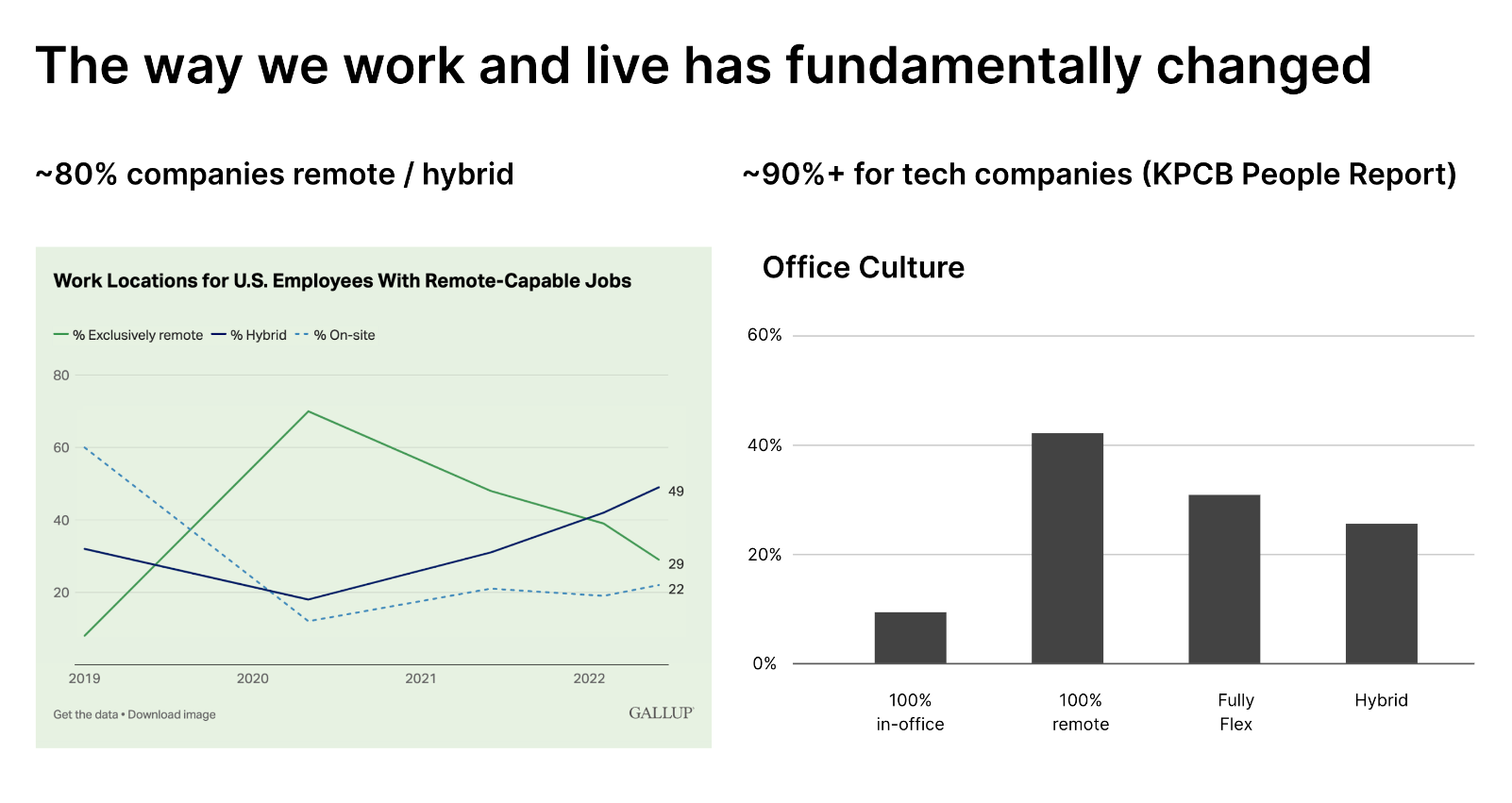
Even though the way we work and live has changed, our desire for connection remains the same.
- According to a report titled The State of Workplace Connection (2022) published by Blueboard, almost 80% of employees want to work at a company where they feel connected to the people and purpose
- The HR professionals, the hard-working folks who drive employee experience, recognize that due to changes, the way we connect employees has fundamentally changed
- A large majority of employees will vote with their feet, stay at companies that prioritize connection, and leave companies that don’t
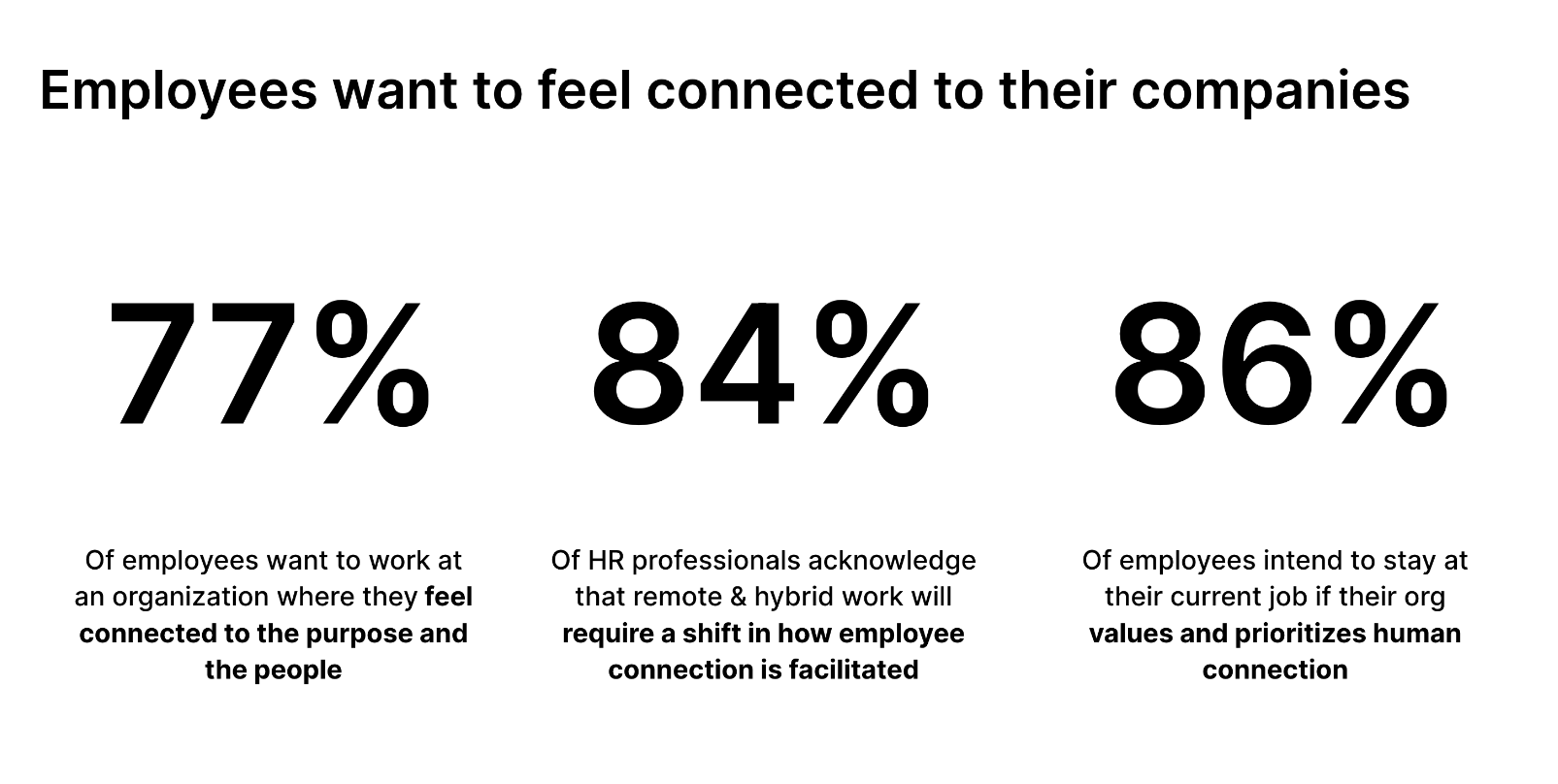
We invest in building employee connections at Marco. Our team is spread out between New York, San Francisco, Los Angeles, Miami, Boston, Seattle, Atlanta, Mexico, Brazil, and the Philippines. We have to bring our people together to build Marco’s culture.
It’s not just window-dressing. We firmly believe that connecting our employees allows us to build empathy for one another, increases creativity, and drives business results. Here are some photos of us at virtual events (bottom right where I tried and failed to make a Gingerbread house), in-person gatherings, and team-wide retreats in the US and Mexico. These are some of my favorite moments in this 3-year journey so far and I look forward to many more.
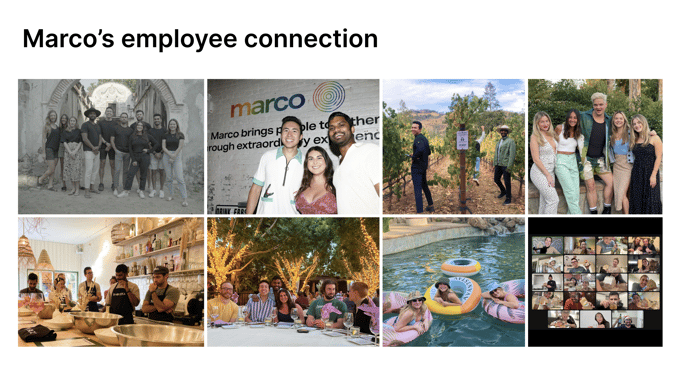
We are also grateful to have the chance to help our customers connect with their people. Here are some photos of an event with one of our favorite customers, Melio. These photos aren’t staged - you can see people laughing, smiling, and dancing. As one Melio employee said, "this was the single best day of my professional career". Roohi Ahuja, an Employee Experience Manager at Melio pointed out that over 90% of employees during this had never met each other though they had been working together for over a year.

The way we connect employees is also fundamentally changing. We are running an ongoing survey to measure how employees connect their people across virtual and in-person events and company retreats. Here are some insights we found:
- Type of connection matters - different types of connection have different impacts on connection. More meaningful “flagship” moments which are larger investments like retreats tend to move the needle on employee connection more than virtual events, for example.
- The desire for in-person moments - Virtual connection is here to stay, but employees do feel virtual fatigue. They desire fewer virtual events (quarterly virtual events vs. bi-monthly) and more in-person interactions (at least quarterly in-person events, and bi-annual retreats)
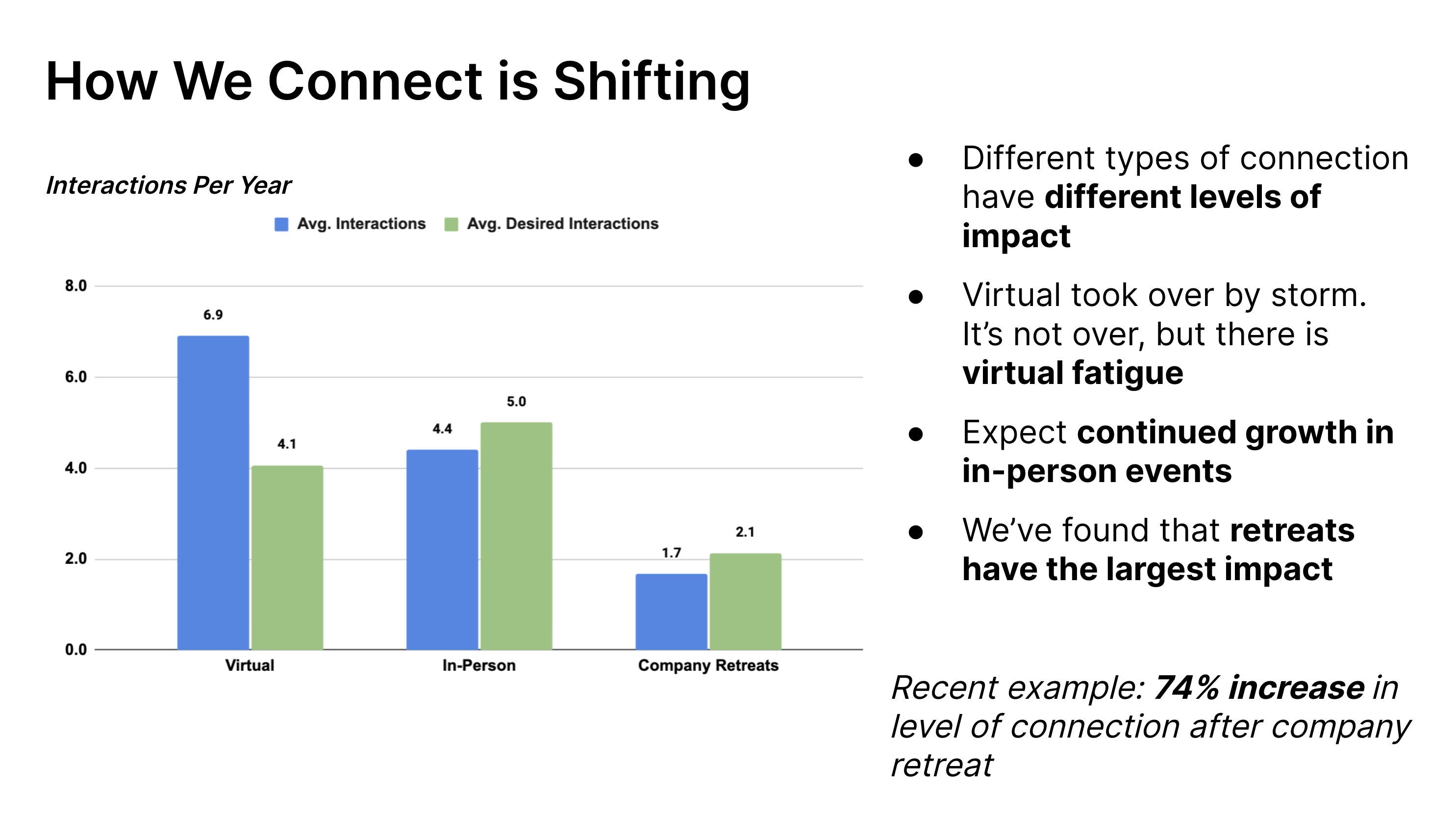
The Sendoso conference was focused on how events can be helpful in sales and marketing. At this point, the importance of increased connectivity in our personal lives and within our companies makes sense.
But why should we care about authentic connection with our customers?
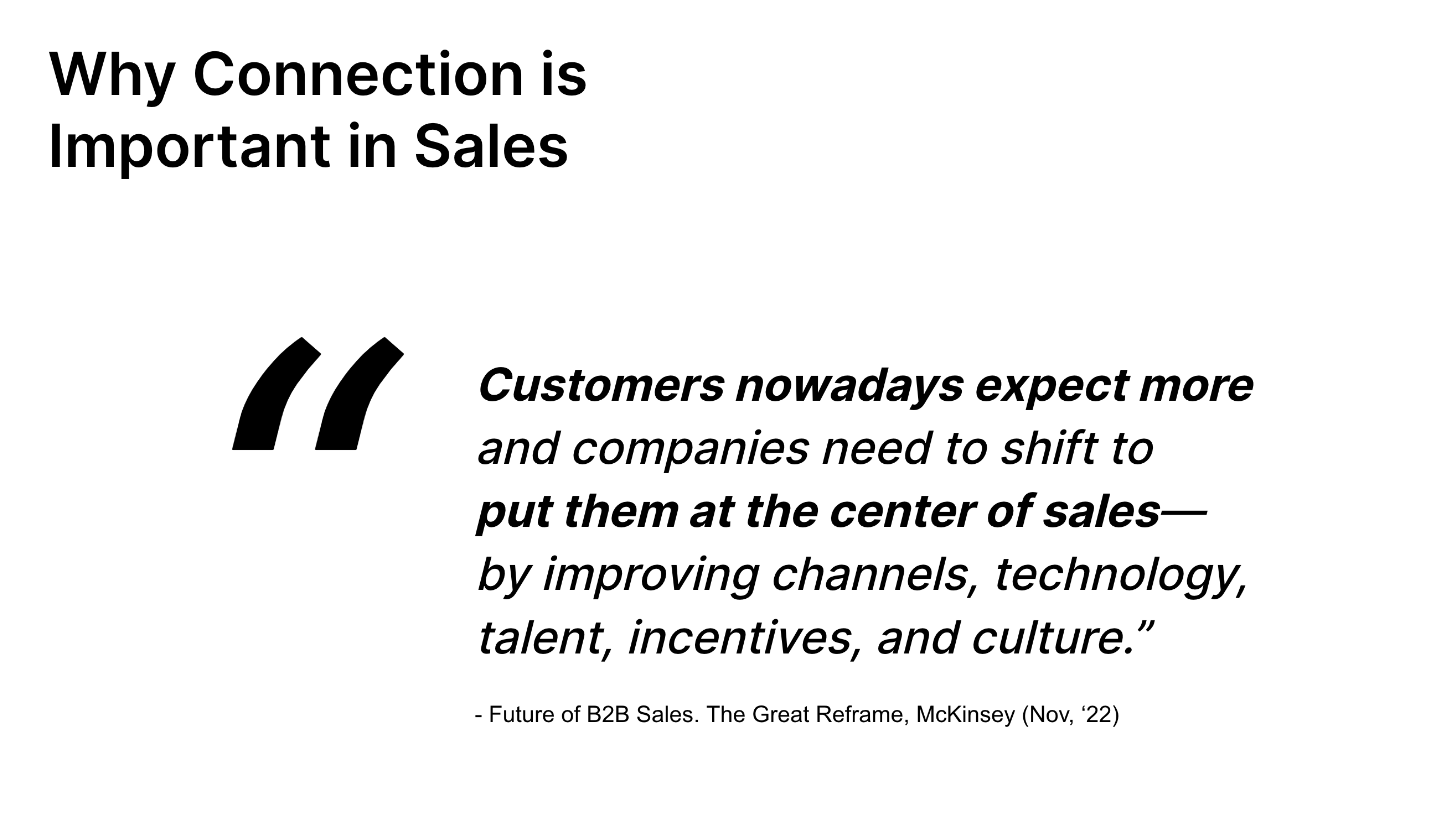
The best description of sales that I have heard is “pain-finding.” Everyone engages in sales in some form or another. Effective sales involve finding customer problems and explaining how you can solve those problems with a product or service.
The best way to do this effectively is to connect with your customers authentically.
Sales and marketing are becoming increasingly complex. They are multi-channel and supercharged by technology. We are being sold to constantly - the best way to stand out as a company is to develop a connection with your customers.
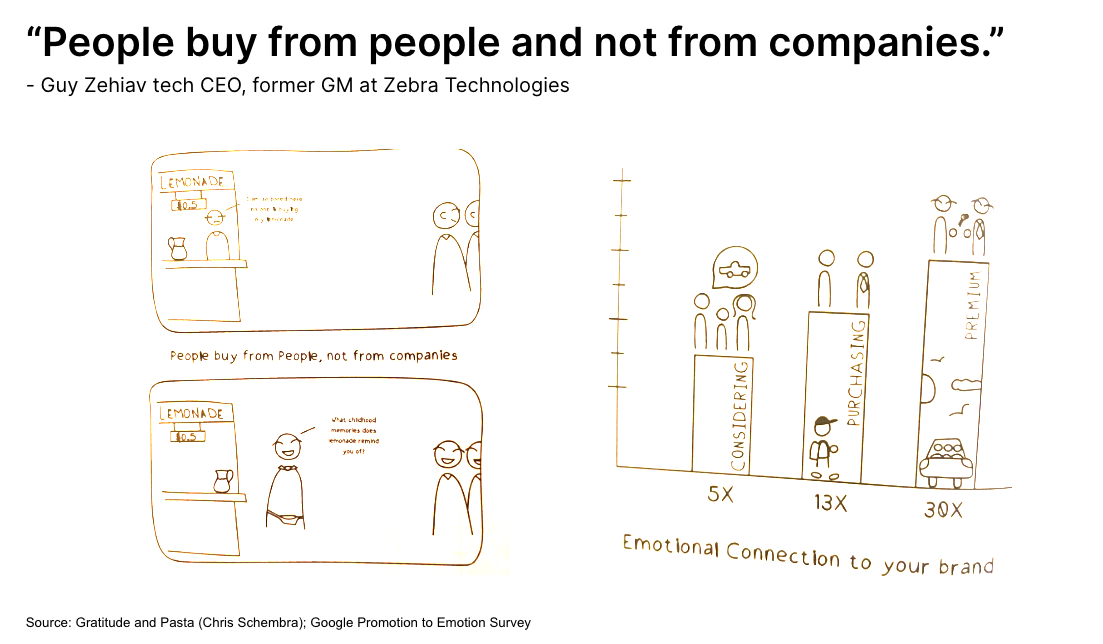
One of my favorite quotes by Guy Zehiav, prominent tech CEO and former GM of Zebrat technologies is that “People buy from people and not from companies.” It is increasingly important to humanize ourselves in business.
In the illustration above from Chris Schembra’s book “Gratitude and Pasta,” we see two versions of a lemonade stand.
The first person behind the lemonade stand is not engaging with his potential lemonade customers. They say “I’m so bored, nooned is buying my lemonade.”
In the second, they ask their customers “What childhood memories does lemonade remind you of?” The customers are engaging. This person is probably going to sell some lemonade.
The importance of the connection between companies and their customers is supported by data. In Google’s “Promotion to Emotion” Survey, they found that creating an emotional connection to your brand has a massive impact on conversion.
Customers are 5x more likely to consider purchasing if they have an emotional connection to your brand. They are also 13x more likely to purchase, and 30x more likely to pay a premium for your product!
Intentional experiences and events are one of the most effective ways to build this connection.

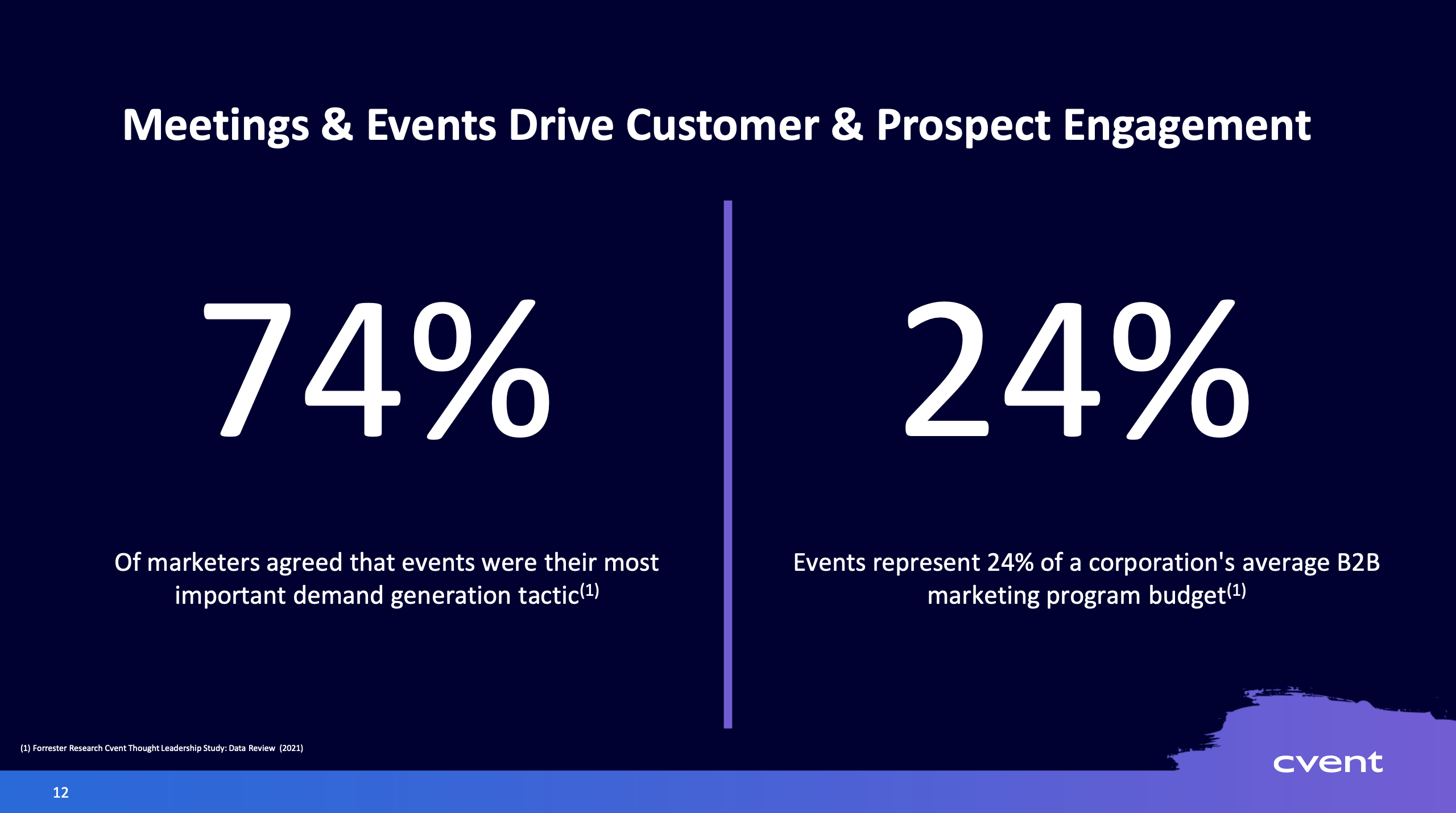
They also represent a massive market. In their recent investor presentation (Nov 2022), Cvent points out that business events are a $1T global industry. A big portion of this includes external events - and nearly 3/4ths of marketers agree that events are their most important demand generation tactic.
How do you make events intentional? Especially given current the current macroeconomic situation, we are all scrutinizing our spending to ensure they have a positive ROI.
At Marco, we host community events called Meet Marco events. We find them to be the best way to build a community of customers that is passionate about our mission and allow them to get to know us as people and not just a website.
Recently, we launched a Community Catalyst event series where we bring together People and Community leaders.
Our first Community Catalyst Event was in New York at one of my favorite bars in the Lower East Side called Accidental Bar co-hosted by NFX, a leading seed-stage fund that is focused on investing in its founder community called the Guild. We had Radha Agrawal, founder of Daybreaker, a 500K+ positive dance community, and author of the book Belong speak at the event.
25+ community leaders showed up to the event - Head of Platform and Community at venture capital firms and startups in NYC. The best thing about the event was its authenticity and intimacy. It wasn’t just “another happy hour” - it was an experience where attendees were able to connect, share tips and tricks around community-building, and get to know each other on a personal level. You can read more about the event here.
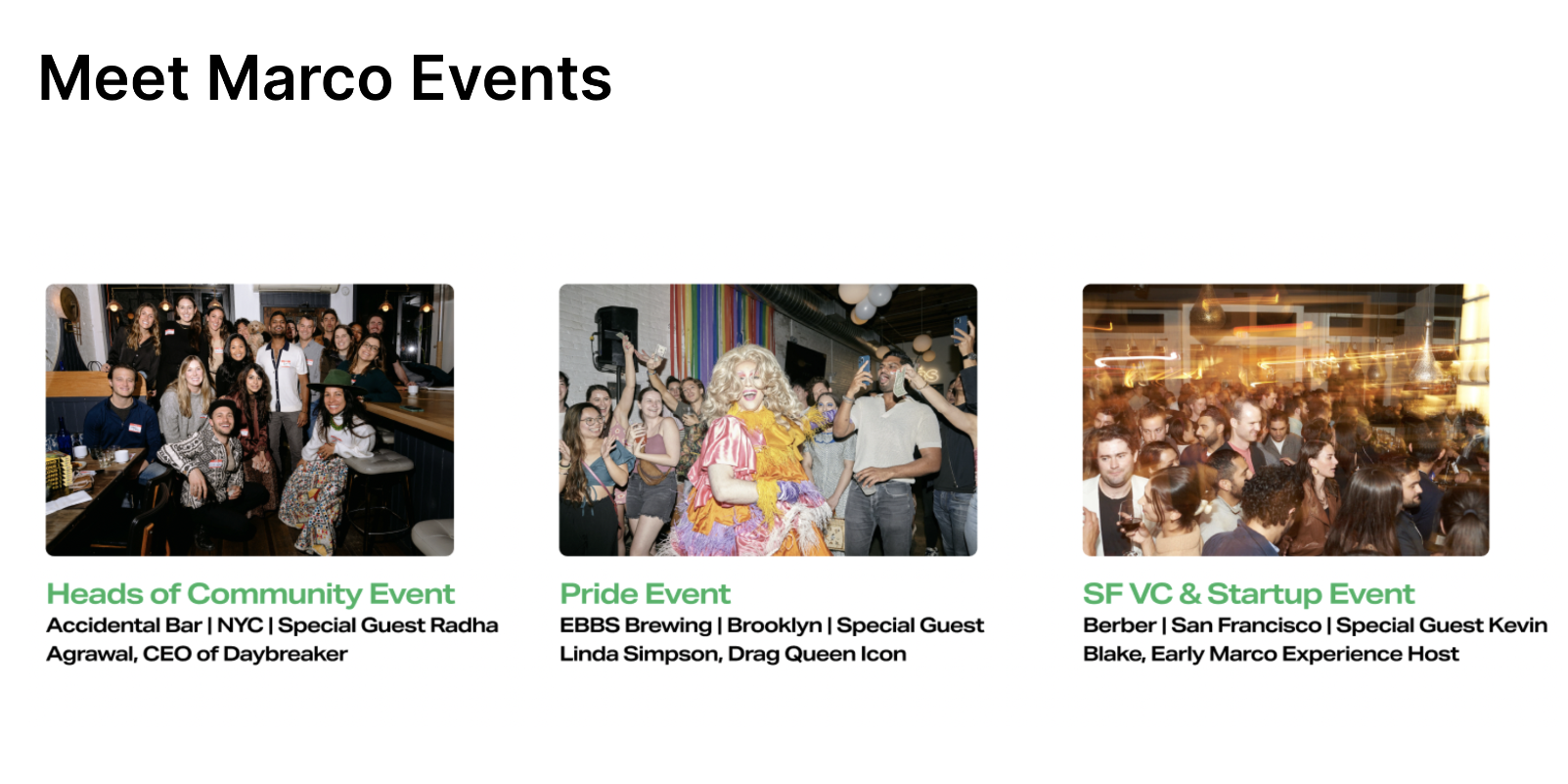
We’re also excited to support our customers in engaging their communities. We were excited to support Google Pixel in an event they did for a set of influencers as part of their new phone launch. A group of creators traveled upstate to Autocamp Catskills, one of our retreat partners that places beautiful Airstreams in unique locations across the country to provide an amazing “glamping” experience.
Even though the creators weren’t Google employees they felt like extensions of the company - a part of the community that Google has built. The content they were able to capture was beautiful and I’m sure was helpful in the phone launch.
![]()
We wanted to leave the audience with some actionable steps they could take to engage their communities through intentional experiences.
Here they are:
- Invest in building a community vs. just optimizing for transactions: We all want to drive purchases, but the best way to do that is through building a community around a movement
- Develop a strategy around authentically connecting this community: Part of this will hopefully involve intentionally crafted experiences, but this should be well thought out
- Coordinate cross-functionally: Get buy-in across sales, marketing, product, and analytics to ensure success and alignment
- Be intentional and human: Not only will this make the strategy more effective, but you will have more fun 🙂
- Determine how to track ROI: Events historically can be a channel where people claim it’s hard to track the return. Technology changes that. You can track metrics including RSVPs, attendees, lead generation, engagement, post-event sentiment, and post-event conversion
